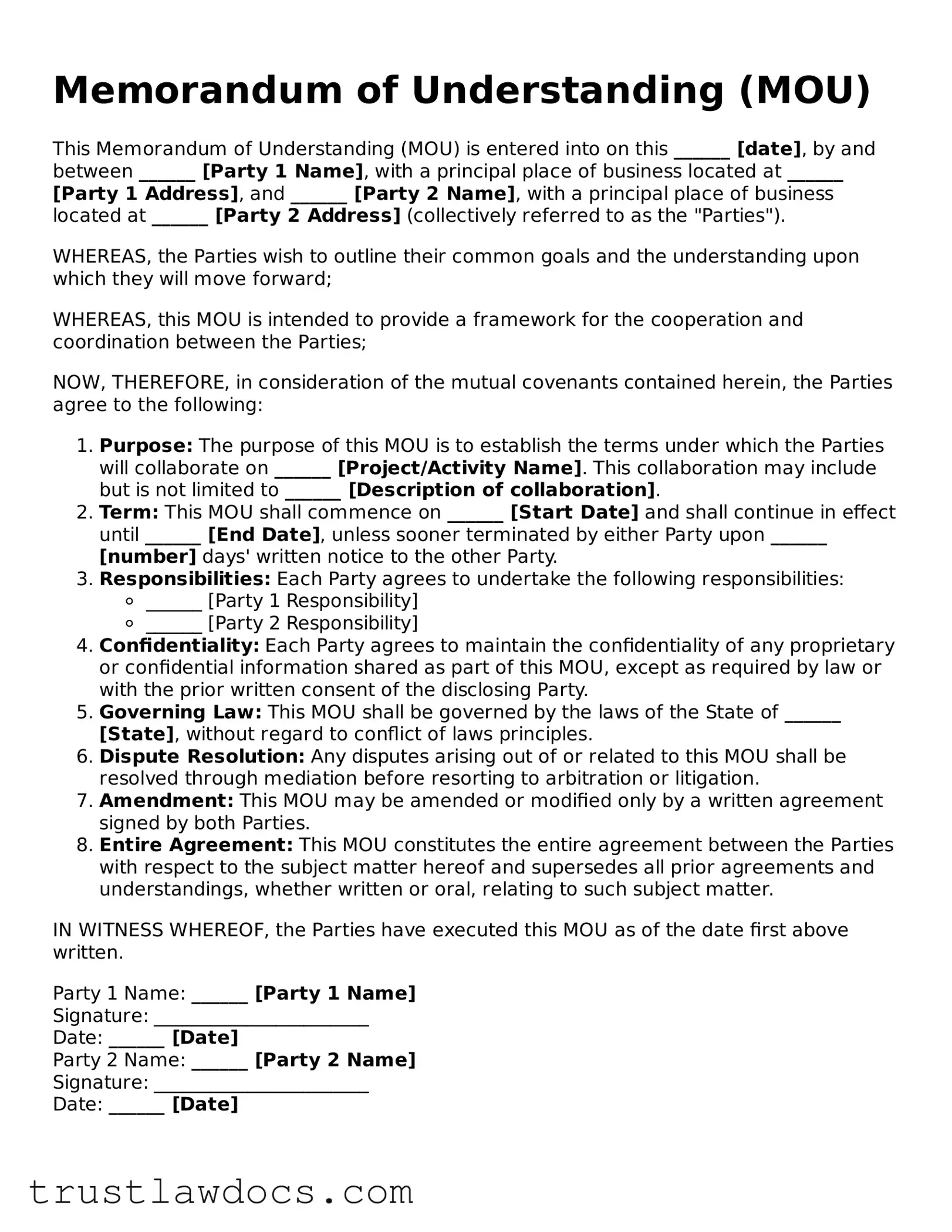What is a Memorandum of Understanding (MOU) form?
A Memorandum of Understanding (MOU) form is a document that outlines an agreement between two or more parties before the agreement is finalized. It is a written understanding that captures the intentions, roles, and responsibilities of the parties involved in a collaborative effort. While not legally binding, it serves as a serious commitment that can pave the way for a formal contract.
When should I use an MOU?
An MOU should be used when parties are ready to document their intentions and agreements in a structured but flexible format. It's often utilized in the initial stages of partnerships, collaborations, or any negotiations that require a documented understanding without the weight of a legal contract. Common scenarios include business partnerships, service agreements, and cooperative projects.
Is an MOU legally binding?
Typically, an MOU is not legally binding. It is a sign of good faith and a mutual understanding between parties, rather than a contract enforceable by law. However, if the MOU contains certain elements like an offer, acceptance, and consideration, it might be considered a contract under the law. To avoid unintentional legal obligations, it's essential to clearly state the non-binding intent of the document.
What are the key components of an MOU?
An MOU should include the following key components: the names and details of the parties involved, the purpose of the agreement, roles and responsibilities of each party, agreed-upon terms and conditions, the time frame for the agreement, and the signatures of all parties. Clear language and a detailed description of each component help prevent misunderstandings and ensure the document accurately reflects the agreement.
How do I draft an MOU?
To draft an MOU, start by outlining the purpose of the agreement and the scope of the collaboration. Clearly define the roles and responsibilities of all parties involved. Include terms and conditions that cover all aspects of the agreement, such as financial arrangements, timelines, and confidentiality requirements. Review the draft with all parties involved to ensure accuracy and mutual understanding before obtaining signatures.
Can an MOU be modified?
Yes, an MOU can be modified if all parties involved mutually agree to the changes. Any modifications should be documented in writing and signed by all parties, either by amending the original MOU or drafting a new document. It's important to maintain open communication and ensure all changes are clearly documented to prevent disputes.
How do I terminate an MOU?
To terminate an MOU, the parties should first review the document to understand any terms regarding termination, such as notice periods or specific conditions. If no such terms exist, the parties can agree to terminate the MOU by mutual consent. A written notice of termination, signed by all parties, is recommended to formalize the end of the agreement. This helps ensure clarity and prevents potential misunderstandings or disputes.
